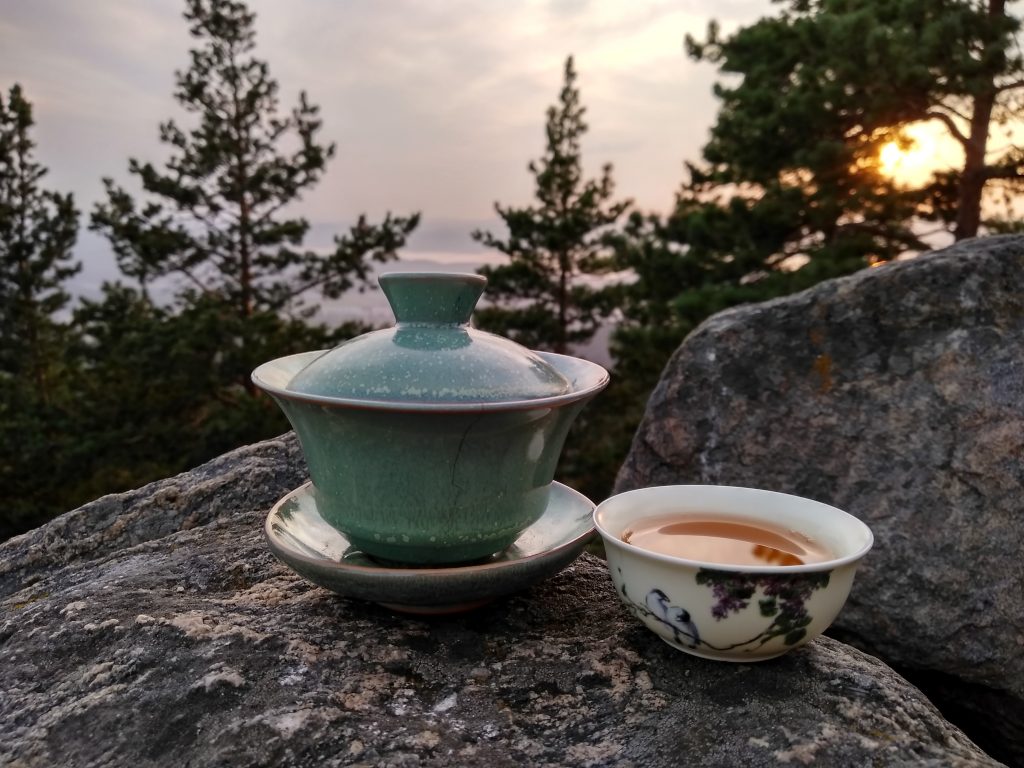What is Chinese tea? Why do we have so many tea lovers in the world, and why so many people are interested specifically in Chinese tea? Why should it be interesting to you? And how it is different from teas produced in other countries?
First of all, tea is overall a great and healthy drink. But a lot of people use the word „tea“ for all warm drinks, infused with hot water, even if it‘s dried herbs or dried fruit. Here we will call „tea“ only the leaves from Camellia sinensis, the tea tree or the tea bush. It‘s history started in ancient China, specifically in the territories of what is now called Yunnan and Sichuan. Later other countries also started cultivating tea trees, but China is undoubtedly the homeland of tea, and Chinese people have the oldest, deepest and most diverse traditions for producing and brewing tea. Getting to know Chinese tea you ultimately get to know Chinese culture and, of course, old and intriguing history of tea. It has become a hobby and a wonderful pastime for so many people, and if you learn how to make Chinese tea in a traditional way (which is not complicated at all) and acquire several tools for that, you will have a great entertainment for yourself and your family or friends. There are so many teas that you can always find something new. You can explore classical, well known teas or look for new sorts that are constantly being created.
When you start your journey, you will encounter a lot of names in the world of tea, so you need to know the basics to navigate succesfully. Everything that is made from tea tree (Camellia sinensis) can be divided into 5 or 6 sorts (the third – yellow – is not always mentioned) and every tea, that has it‘s own unique name, can be accounted to one of these categories:

(these sorts are named from weakest processing to strongest, which means that the first tea will be the lightest and the last ones will be the darkest)
1. White tea. The lightest and fairest of teas. It‘s buds and leaves are only withered in the sun and then dried, but it has high requirements for the quality of the leaf.
2. Green tea. Probably one of the best known, lightly processed, not fermented.
3. Yellow tea. Rarely mentioned, because nowadays it is becoming really complicated to find real yellow tea, and usually what i see in shops is hardly close to how the original should look like. In China it was given as a tribute to the emperor and it is a bit similar to green tea but it‘s much deeper and more flavourful and it has a specific production technology.
4. Oolong tea. Semi-fermented tea, which is something in between green and black, and they are usually more aromatic and, as many would say, more interesting. You can divide oolongs into lighter and darker ones (closer to green and black teas, respectively). Oolongs are usually more pricey that green or black tea. It‘s production requires very high quality leaves and the production technology is complicated with a lot of manual labor.
5. Black tea – probably the most popular in Europe, but most people know black tea that is produced in India or Sri Lanka. Chinese black tea, because of the varietal of the tea bush and manual production technology, is milder and more subtle, has a sweeter aroma and a bit less caffeine and less bitterness.
6. Puerh tea – made in Yunnan and until very recently – a product, made only in China. Puerh tea became very popular in the last decade and, because it can be aged almost indefinitely, interested a lot of collectioners. We could divide puerh tea into two types – green puerh and black puerh. The green one is historically older and closer to green tea (while its fresh) and the black one is strongly fermented and very dark.
Chinese people prepare tea differently than we are used to. Although in these stressful times they also infuse tea in bigger pots or cups, the traditional preparation requires a bit more tools and time. But it gifts you with a great relaxation and a ritual (for example, to make a pause during your working hours or to rewind with tea after work). The tea is infused in a very small clay pot or a gaiwan (a cup with a lid, which allows you to comfortably pour out the infusion without pouring out the tea leaves) and later it is divided in to small cups. Usually the amount of dry tea leaves fills from one quarter to a half of the pot or the gaiwan, which seems a lot, but the infusions are made very quickly. In this way you can infuse the same tea many times and control the strenght of your tea.
So getting acquainted with Chinese tea can really enrich your life – so many new tastes, a glimpse into their culture, etiquette and also ancient and modern China history. It can become a great hobby and at the same time motivate to live a healthier life, give you a way to relax and to learn new things. And, of course, bring a lot of interesting people into your life!

